|
James DeAndressi B.S, NASM-CPT has been interning at SportPerformanceU this summer and will be today’s guest blogger. James earned his bachelor’s degree in exercise science from Southern Connecticut State University and is planning on attending school this fall to become a physical therapist assistant. Below you will find his piece on why including a proper warm is so important. It is clear based on research, observation, and comparison that a good warm up before a workout can increase the overall quality of how you spend your time in the gym. The question is however, what makes up a good warm up and why is the warm up part of the workout important? All trainers may have different opinions and different ways of training but for the most part, it is fair to say that most qualified trainers in any setting should agree with the warm up being a key part to an individual’s daily routine. At SPU we will typically start a client with soft tissue work as well as some specific dynamic warm up exercises. Soft tissue work for a client will be mainly foam rolling or simple active massage unless the trainer is certified and/or licensed as a professional health care provider. They need to be legally bound to doing some type of manual soft tissue work on a client. Foam rolling is safe, effective, and backed by research to roll out fascia to fix cross linked muscle fibers. This will in turn make the muscles fire and perform the best it can for that specific person at that specific time. Foam Rolling Techniques A good warm up needs to consist of anything we as trainers believe will have a positive impact on our client during the workout. Mobility, or in other words, the ability to move freely through a given range of motion is one component to a good warm up. Exercises to increase range of motion include ankle dorsiflexion at a wall or shoulder wall slides. Corrective exercises are another key component. These exercises will be put on a client’s program depending on the results of some type of movement analysis. Corrective exercise is a broad topic but in the simplest of terms, they are specific exercises that will be targeting some type of human movement deficiency. Examples of some corrective exercises would be Unilateral or Bilateral Internal/External Rotation of the shoulder joint or hip joint and bird dogs to increase core stability as well as to strengthen a specific deep muscle connected to the spine which can cause pain. Trainers should take note of any types of movement deficiencies during every training session in order to progress or add/subtract corrective exercises. In other words, analyzing movement should not be an afterthought but should be constantly on a trainer's mind during sessions. To learn more about SPU’s specific biomechanical analysis, read our blog which gives some detail on this topic. Dynamic exercises are another way we can prepare a client’s body for the upcoming workout. At SPU this is the final part of the warm up before going into our power, strength, speed, and conditioning blocks. According to Eric Cressey, in his book Maximum Strength “we are focusing on raising body temperature which in turn will raise muscles temperature. Lubricating muscles and joints as well as increasing mobility in key joints while enhancing stability in others in order to perform strength movements more efficiently” is also part of the equation. Some examples of dynamic exercises would be leg raises or a lateral shuffle. Trainers who understand the importance of a well-balanced exercise program will have a warm up section that is not overlooked, rushed, or inefficient. For a client’s own personal well being, I would recommend changing trainers if they did not properly warm up a client before a workout. Fitness professionals should all look at the warm up as a line of defense, if you will, for decreasing injury. As fitness professional including a solid warm up is a necessity.
0 Comments
There are exercises that are considered bad. Some because they can cause injury, others because they are just plain ridiculous. I’m sure you have seen some on YouTube that make you cringe! But there are also a lot of exercises that fall into a “gray” area. The gray area is more dependent on the specific individual performing the exercise. One exercise that is bad for one person might be great for another and vice versa. This is where exercises can get a bad rep. let’s review some common examples.
Most overhead pressing is considered a huge no no within the general population, and for good reason. Pressing a barbell from the front of your shoulders to an overhead position is usually contraindicative for much of the general population, which means from the back of the shoulders would be even worse. A competitive weightlifter that performs exercises such and the clean & jerk and snatch will on the other hand most definitely have to be able to overhead press to compete at their sport. Athletes that have developed the ability to do this exercise safety will use overhead pressing as a staple of their training program. There are two very different people, a desk jockey and a professional weightlifter. They probably will not and should not be performing the same exercises. It is much more important that the exercise is appropriate for the specific individual than just calling it a bad exercise. Again, there is a gray area for many exercises. The back squat is the king of exercises. Just ask anyone that trains high school football players. The back squat is without a doubt one of the best exercises to develop strength and athleticism. This does not mean it is appropriate for everyone. There are more people who have no right back squatting than the other way around and that includes high school football players. Can the individual perform a bodyweight squat with their thighs pass parallel? If not, then the person should not be performing a back squat. There are many things that an athlete can work on so they can perform the back squat, but those things have to come first. To find the true reason why someone cannot perform a back squat a battery of tests would have to be performed to assess the reason for the limitation. Once that is done and the individual performs the necessary steps then back squatting can be added to the training program. A simple rule when deciding if someone is capable of performing an exercise is to have them execute it with just their bodyweight. If they pass, feel free to add that exercise, if they don’t, find a way to fix it. There are also times when unfortunately you probably should not perform a certain exercise ever again. If you are a desk jockey and herniated a few disks, deadlifting might be out for some time, if not for good. I for one always look for variations of an exercise to see if it would work. With this example single leg deadlifts might be able to be added back in eventually. And if I had to choose between no deadlifting and the single leg variation I am taking the later every time. What it really comes down to is if an exercise is appropriate for the certain individual, not if the exercise is good or bad necessarily. An exercise can only be bad if one is not capable of performing with proper form. Everyone loves doing what they are good at, whether it be push ups, squats, deadlifts or any other movement. But ask yourself, how much better are you making yourself if you always focus on your strengths. If you have a great looking squat and your deadlift is lagging behind try taking a few weeks or months to focus on bring your deadlift up to par. I’m not saying don’t squat, but make the focus getting good at deadlifts. Ask yourself what it is about the deadlift that you struggle with. Is it the lift off, lock out or something else? Make a program focused on bring up your weakest link. As it pertains to the deadlift let’s say that you struggle with your lock out. You might want to start with adding in more heavy rack pulls higher up on the thigh. What if you are a bit slow off the floor? Maybe you need to throw in some speed work with lighter weight. Is your upper back strong enough to lift big weighs? If not, throwing in some more rows and chins into your program will help. At the same time there should always be balance in your training program. An example of this would be those that love to bench press (you know who you are!), but maybe sneak in a pulling exercise once or twice a month. This will lead to weaknesses and imbalances creeping in. The last thing you want is to be injured from a training program that is unbalanced and poorly written. For our athletes out there this is also extremely important. During the season, depending on your sport, attention should be paid to what imbalances and weaknesses usually show themselves during your season. If you are a quarterback your plant foot and throwing arm will be getting more work during practice and games. This could lead to overuse injuries if not cared for during the season. An in season training program needs to focus on preventing the opposite limbs from lagging behind and also making sure overuse injuries do not present themselves in the more active limbs.
Make sure you are working with your performance coaches to have the best chance at avoiding injuries. It is up to you to make sure your weakest links are brought up to par, if not you will always be held back from your true potential and possibly on the side lines with an injury. The split stance perpendicular medicine ball scoop is one of my favorite medicine ball (MB) exercises for developing sport specific power. It is a great movement because it relates so well to most sports and is very specific to how athletes produce power during competition. Coaching Cues
· Assume a split stance with the back heel off the ground. · Begin by slightly dropping the front knee towards and ground. · As the knee is dropping start rotating your thoracic spine (upper back). · Keep your eyes on the medicine ball the whole time. · After the slight knee drop and thoracic spine rotation explode up by driving through the front heel and forcefully extending the hips. · Scoop the medicine ball into the wall and be ready to catch it on the bounce back. Picture a hockey player skating up ice, a baseball player stealing 2nd base, a basketball player dribbling by an opponent, it is going to look very similar to this specific MB exercise. Each player will load their posterior chain by making a slight dip and then explode out of that stance. Any athlete that moves their feet into a split stance can use this exercise to develop sport specific power. Try doing 3 sets of 6-8 repetitions per side to develop sport specific power. Power is a quality that every great athlete needs to possess in order to excel at their sport. It is the final touches that propel good athletes into great ones. Without a doubt, this is an area that an advanced athlete needs to pay great detail and attention to. The questions that have to be asked are how and where does this power need to be applied. Does it involve rotational or linear movement? Those will be the questions that I look to answer for sport specific power development. first things first, the greatest amount of power that can be produced is transferred through the ground up through the lower body. When an athlete exhibits a tremendous amount of power, whether throwing, kicking, hitting, tackling or any other form, that power is produced by applying explosive force through the ground. Power and force are inversely related but are still components of one another. Bottom Line: Develop strong explosive wheels to produce tremendous amounts of power. What you need to produce the power against will usually dictate what direction you need to train power. If you are tackling an opponent you will most likely train power in the sagittal plane or perform a linear movement. If you are moving an object such as swinging a racket or throwing a football you will be training power in the transverse plane which is a rotational movement. Bottom Line: Power development should be sport specific for the advanced athlete. Ok, so we answered the how it needs to be produced and where it has to be applied. How about what should we do to train those sport specific power movements. Training power in the sagittal plane could involve movements such as box jumps, power cleans and snatches. These movements are all preformed in the sagittal plane and would be great exercises for a hitter (volleyball), power forward (basketball) or offensive guard (football). Athletes that need to train power in the transverse plane would use a variety of medicine ball rotational throws, scoops and slams. These would be great for our pitcher (baseball), quarterback (football) or golfer (golf).
Bottom Line: Power exercises should be selected based on the sport and position you play. Remember this topic is about advanced athletes. There is nothing wrong with a twelve year old quarterback working on rotational power, but let’s not get carried about getting to sport specific at a young training age. Let the athletes develop and learn, then master the basics. As for our advanced athletes sport specific training is key to their success. Whether you are training top level athletes or the average soccer mom, chances are that knee pain has been an issue in some way, shape or form. Now the majority prefer to take it easy and not train while sorting out an injury. And depending on the injury that makes perfect sense. If you tore your ACL and MCL last week, I don’t plan on seeing you next week! But the majority with little nagging issues would be best suited to continue some form of training depending on the severity of the injury. Always consult with your medical team beforehand to figure out what is actually going on in your knee. If the team gives you the ok to continue training then here are some ideas about how to still get a great training session when managing knee pain. 1. REDUCE THE AMOUNT OF CONTINUOUS FLEXION AT THE KNEE. Depending on what exacerbates the knee pain, reducing the amount of flexion (bend) at the knee could greatly reduce the level of pain. Avoid knee dominant exercises such as squats and lunges. Stick with hip dominant movements that focus on keeping the hips high. Exercises such as double or single leg Romanian deadlifts, lateral mini-band walks and supine bridge variations could all work. Below I am performing a single leg Romanian deadlift with the assistance of a TRX. 2. FOCUS ON THE CORE. If there is a need to reduce the amount of volume in one area, focus on something else for the time being. The core can be trained from multiple angles and recovers quicker than larger muscles groups. 3. FOCUS ON UPPERBODY PUSHING AND PULLING. To somewhat piggy back on the previous point, focusing on the “real” core is also another option. The core has been said to be what lies between the shoulders and hips, which leaves a lot of room for pushing and pulling. Pushing does usually get a ton of focus from many programs, but there is usually room for improvement with the amount of pulling. Throw in some more rowing and chin up variations. 4. FOCUS ON THE HEALTHY KNEE. If there is still one healthy knee I suggest single leg variations such as step ups, single leg squats and single leg deadlift variations, all of which can be regressed to meet the needs of the athlete. Below I am performing a single leg squat with the assistance of a TRX. It goes without saying, but I am going to say it anyways. Consideration of the actual injury has to be taken before trying any of these recommendations. The training program will be based on the diagnosed injury and the results of the analysis. If there is pain during an exercise it should not be included in the training program. We get a lot of parents and athletes asking us for exercises that are "specific" to their sport. Hockey players want hockey specific training, football players want programs that relate to their position, etc. And rightfully so - most athletes who train are doing so with performance in mind. They want their work in the weight room to translate to the fields of play. The question is, what constitutes a sport-specific exercise and how much does an athlete need to train in that way?
It is true, some exercises are similar to movements we see in sports, and therefore translate quite well. Take, for instance, a quarterback doing rotational medicine ball work. Or, take a boxer doing a landmine single arm press. These movements are both visually and functionally very similar to way an athlete would move while playing the sport. What we must remember is that a training program that consists only of these "specific" movements is not a well rounded program and can lead to decreased performance and injury. Exercise selection should first take into account each athlete's biomechanical integrity. If an athlete is restricted in a certain movement, we can't load it no matter how specific it is to their sport. We first must fix the pattern before moving onto the loaded exercise version. Take a squat - this movement I would consider "specific" to offensive lineman; they move and push in bilateral patterns, and their firing out of a stance can be similar to a squat. So, for offensive lineman, yes, we would like to program squats. However, if an athlete fails the squat portion of our analysis and doesn't yet possess the mobility and stability to do the movement properly, we can't just throw it into the program because it is "specific." Exercise selection needs to be specific to the athlete before it is specific to the sport. If an athlete has the mobility and stability to do the required movements then we can begin to specify. What that means is when we choose exercises for each major movement (push, pull, knee dominant, hip dominant, etc), we choose exercises that relate to their sport. However, we won't leave a major movement category. So, when looking at what knee dominant movements we want to accentuate, we might choose a rear-foot elevated split squat for a wide receiver, and a front squat for a lineman. The end point here is that doing exercises that are specific to a sport is important for athletes who are ready and capable, but don't take that for granted. Many athletes need to work on movement patterns, mobility, and stability before they can progress to some of the "specific" exercises. |
Archives
July 2024
Categories
All
|
Proudly powered by Weebly


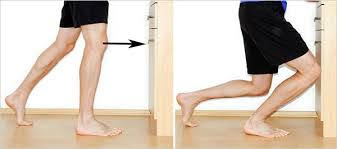
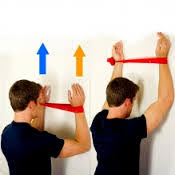
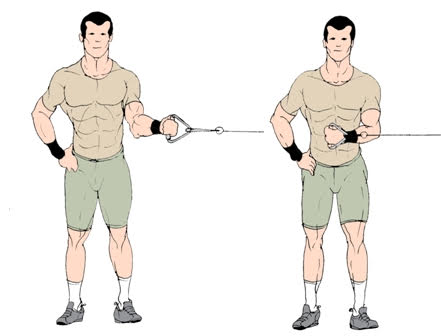

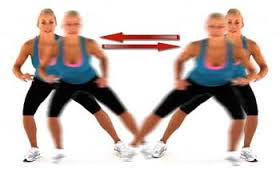
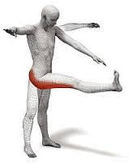



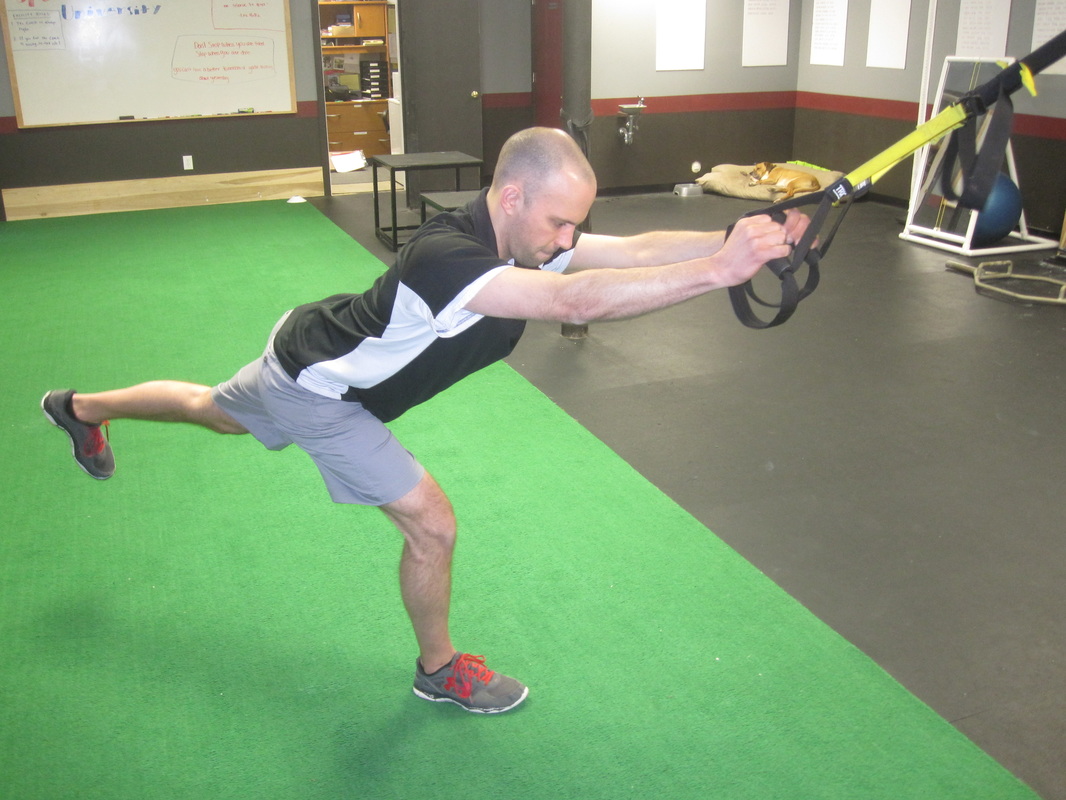
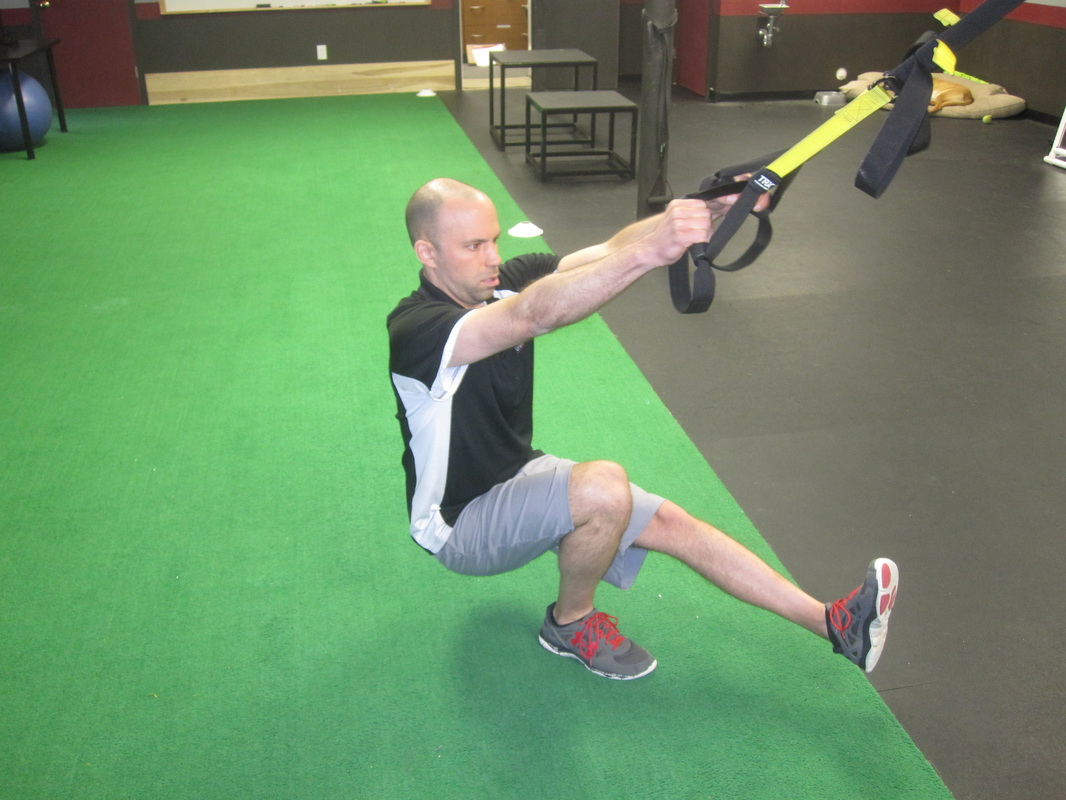
 RSS Feed
RSS Feed